Chiang Mai, Thailand: A shopper’s paradise from silkworm to luxury goods
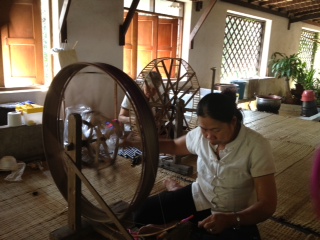
Factory Row, also known as Sankamphaeng Road, in Chiang Mai, Thailand is a shopping experience with an educational twist.
I expected a visit to Factory Row to be your standard tourist trap, but was pleasantly surprised to find that it was miles of factory stores with presentations in the art of making silks, cottons, lacquered goods, silver and various handicrafts – the backbone of Thailand’s manufacturing industries.
In particular the process of how silk is made was especially interesting for me – starting from silkworms to handlooms.
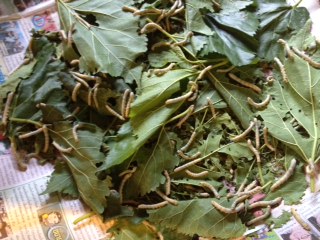
Chiang Mai’s silk industry is a reminder of how timeless some art forms remain despite the progress of modern technology. From reeling the gossamer silk filaments of the cocoon, through the dying process, to weaving the threads into a myriad of shimmering designs, modern machinery cannot come close to producing silks of the handmade quality found here.
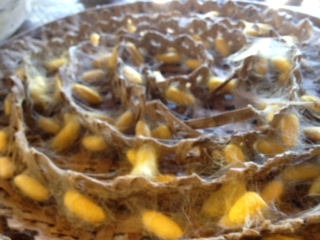
Here are the basic steps involved in hand making silk:
Step 1. Raising silkworms and harvesting cocoons: Silkworms are domesticated insects that mate quickly and die a day or so after laying eggs. These eggs will eventually spin cocoons from which the silk is made. Silkworms are protected in a temperature controlled tray and given chopped mulberry leaves for sustenance. Eventually, the silkworm secretes a steadystream of liquid silk, coated with a substance that hardens once exposed to air. It then starts the process of metamorphosinginto a moth by developing a pale yellow durable shell called a cocoon.
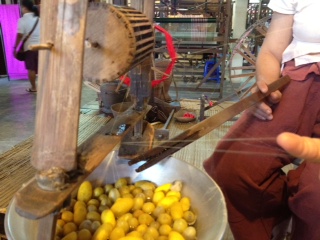
Step 2 – Extracting threads: It takes about 2,000 cocoons to make one yard of silk fabric. Each cocoon consists of many yards of tightly woven silk thread. A special instrument is used to locate the end of the filament, after which it must be carefully unwound. The cocoons are immersed in boiling water to help soften a thick gum coating and unwind the filament. The thread that emerges is similar in strength and substance to that of a spider’s web.
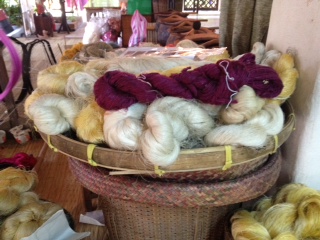
Step 3 – Dyeing the threads After washing the threads, they are prepared for dyeing, which takes place in pots of hot boiling liquid and then hung out to dry. Dyes come from a variety of plants and fruits. For example: yellow from jackfruit; red from sappanwood; grey from coconut; blue-grey from eucalyptus; and khaki from mango.
Step 4 – Spinning Spinning involves twisting or bonding together of fibers to make a cohesive thread. The traditional spinning wheels are used for unwinding dyed silk skins onto bobbins. The silk thread moves through a worker’s hands onto a spinning machine before being rolled onto a bobbin. Stronger threads are made by twisting several single threads together.
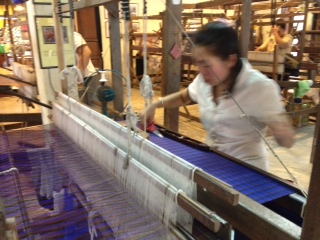
Step 5 – Weaving Weaving is the finishing process of running yarn through a loom. Here’s where we begin to see designs and patterns emerge. Weaving techniques are strict and precise and yarn placement is an art in itself.
Tips for travelling through Factory Row
- Although many organized, guided tours are available of factory row, you may opt for a private taxi or tuk tuk. The cost will be comparable (maybe even cheaper) and you’ll be able to move at your own pace.
- Consider buying fabric from a silk factory and taking it to a tailor who makes made-to-measure clothes.
- For a selection of tailors, visit the area near the night market. If you’re your tight on time, ask the tailor to drop off the finished products at your hotel.
Silk making is an expression of the craftsman's skills – a process that is clearly filled with heart and passion.
Donna Salle is a freelance travel writer and can be reached at TravelsWithHeart@gmail.com.
